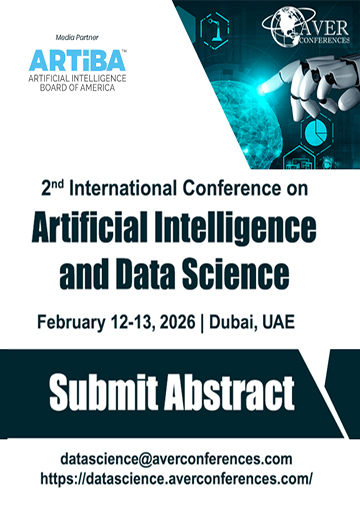Real-World Examples – How AI is Revolutionizing Top Industries

In Japan’s FANUC plant robots are producing robots and they outnumber people. Robots are beating humans in intelligence games, reading and writing pop songs. They are driving us to our chosen destinations and are on their way to become doctors, engineers, scientists, songwriters and painters.
Interesting times are here. Never ever in history, the boundaries between fact and fiction were so thin.
By 2030 AI will add an additional $15.7 trillion to the global economy. Machines aren’t dumb anymore. They are learning from their mistakes and our world is welcoming this change with open wide hands. But why not? After all, we wouldn’t have achieved much without our tools and technologies.
The days when we could sidle AI as just another passing trend are way past us and AI is remodeling almost every industry. Here’s a bird’s eye perspective of this technology renaissance - 6 Industries that are most impacted by this development:
Here’s a bird’s eye perspective of this technology renaissance - 6 Industries that are most impacted by this development:
Finance:
75% of the total financial market volume on the trading floor is driven by AI-automated accounts. In 2018, data-driven investments reached trillion dollars and the number has been surging consistently for the past 5 years. Digital banks and loan issuing apps evaluate loan edibility through machine learning algorithms. This has cut the total time spent on interpreting commercial loan agreements to a few seconds, a period that used to be thousands of hours yearly. AI is assisting in preventing credit card frauds and money laundering.
Spotlight: Different entities are using AI for different purposes. Crest Financial, a US-based organization is using data from past risk cases to identify risk propensity of new projects. Goldman Sachs, ITI and American Express are using Plaid for fraud detection. Wells Fargo, Bank of America and Chase are using apps for personalized services.
Trends to watch for: Efforts are ongoing to include blockchain and cryptocurrency in bank’s functioning. Kasisto app connects banks and their customers and sorts finance related queries. Its chatbots will be able to answer specific customer questions like “How much I spent on shopping last month?” and “What was my account balance 50 days back?” Security questions, user names and passwords will be replaced by biometrics, voice and facial recognition features.
Healthcare
Google, Apple, Microsoft and IBM are all investing in mining healthcare records. Of total 218 healthcare startups, 54 are invested in predictive medicine and 21 are working on wellness applications. Preventive healthcare (wellness) is growing fast in popularity.
Spotlight: Computerized X-ray vision is detecting diseases. Natural Language Processing (NLP) is assisting in drug safety and Machine Learning (ML) is helping find patterns in the population.
Trends to watch for: Rapid developments are ongoing in robotic surgery, drug discovery and medication management. Many prototypes have been successful and their dissemination for regular use is to be observed.
Manufacturing:
Google’s Andrew Ng says “AI will perform manufacturing, quality control, shorten design time, and reduce materials waste, improve production reuse, perform predictive maintenance, and more.”
Spotlight: Siemens corporate technology unit in Germany has developed a two-armed robot that can manufacture products without any programming. Google’s Landing.AI can identify product defects in half a second.
Changying Precision Technology, a China-based manufacturer, introduced automation and managed to bring its employees’ number down to 60 employees and 60 robot arms from 650 workers. It achieved a 250% increase in productivity and 80% reduction in defects.
Trends to watch for: Japan is building 30 million robots which can lift it up once again to number one manufacturer position.
Education:
AI in education is expected to grow by 47.5% between 2017 and 2021. Technology is helping overhaul obsolete education methods and is taking learning outside of the confines of four walls.
Spotlight: Smart content is being introduced in the form of digital guides and customizable digital interfaces. Cram101 disintegrates contents into summarized guide assimilating true and false, multiple choice questions and flashcards. Netex Learning allows educators to build digital content that can be accessed through various devices. Mastery Learning is facilitating individualized learning in classrooms.
Trends to watch for: AI will automate administrative tasks like grading and, will customize and improve courses soon. In the distant future it might replace teachers or change the education process.
Construction and Infrastructure:
Inclusion of AI in this sector is slow but massive.
Spotlight: Construction AI systems are able to recommend design language, construction materials and cost for building at a new location. Contractors are already building 3D printed homes which can be built within hours instead of weeks and months.
Trends to watch for: NquiringMinds, a UK based setup, is using sensors and data to arrive at suggestions to improve operations in urban areas. Analysis of the traffic data will help in reducing congestion and air pollution.
Automobile:
Tractica says revenues in the automotive industry will rise to USD 14.0 billion by 2025. New vehicles will have more and more AI based systems and their use will go up to 109% in 2025.
Spotlight: Oxbotica has introduced Selenium, an AI-powered software that improves the safety of vehicles by ensuring their secure navigation. A Gartner report says that by 2020 around 250 million cars will be connected with their surrounding vehicles and infrastructure through Wi-Fi.
Trends to watch for: BMW’s futuristic ‘i-Next car’ will be in the market in the coming few years. Toyota’s Yui, a self-driving car with an AI companion will know the driver’s driving habits and emotional experience.
Intelligent machines have become inevitable now. The 4th industrial revolution we change the way we live, work and perceive things. Promises are many and hopes are high. It’s time to brace up for a ride that will take us all many rungs up on the evolution ladder.







